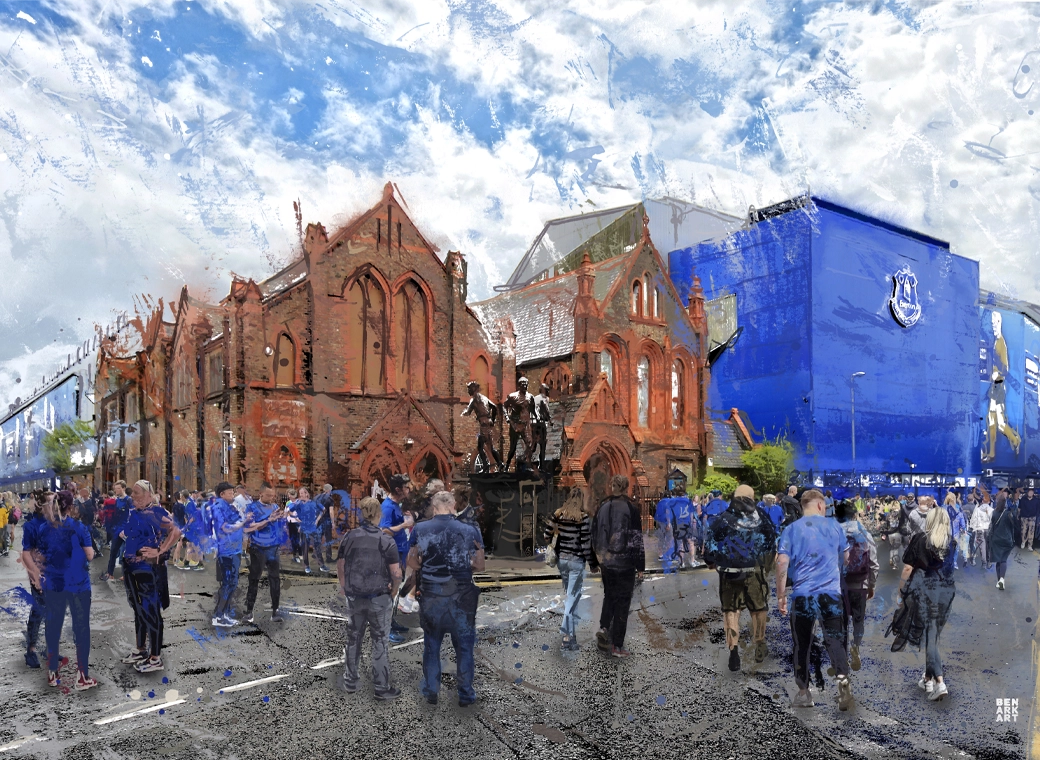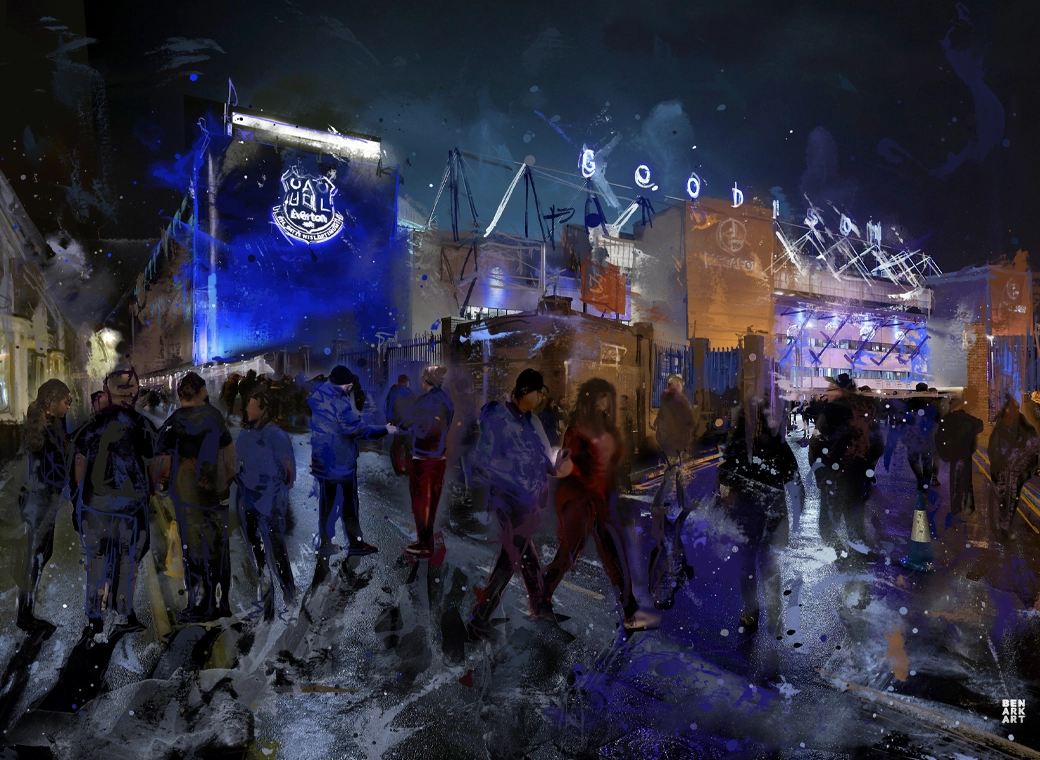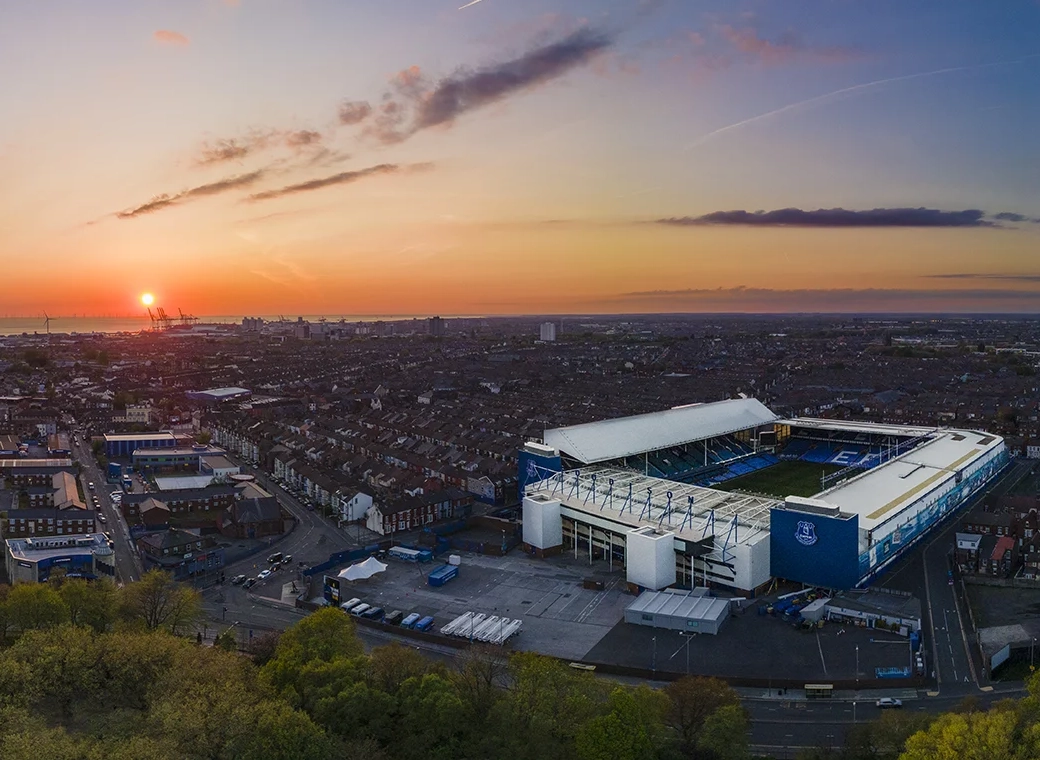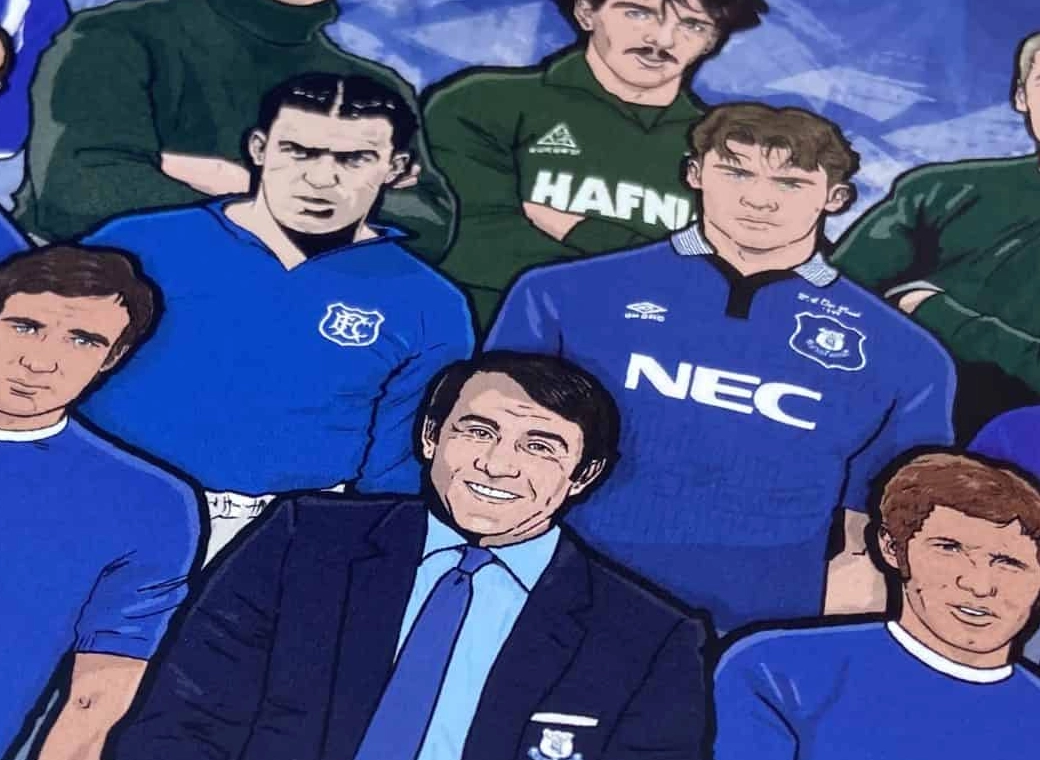If Moshiri paid for the stadium out of his own pocket, what would be in it for LCC. Have a good think before you replyBefore anyone else comes to me with any other nonsense about me "having a problem" with the deal just know that I'm made up that this is happening and I have no anti-Moshiri agenda to push here. I'm just interested in the details of the deal from a financing perspective.
This deal is all about securing cheap financing rates for Everton Football Club, as the business.
I am saying that Moshiri could afford to fund it out of pocket and have EFC forgo these fees to LCC as well as any interest payments for a loan.
That said though, I would never have expected Moshiri to actually pay for a stadium out of pocket when he still only owns 49.9% of the club, that's laughable.
If he owned the whole club it would make sense to fund it personally as he could always make that money back when he wanted by issuing shares at his own discretion and avoid the extra costs of securing financing.
You are using an out of date browser. It may not display this or other websites correctly.
You should upgrade or use an alternative browser.
You should upgrade or use an alternative browser.
brettangellnightporter
Player Valuation: £5m
OK in short.Which misconceptions did you point out?
You seem to say that mosh should be paying for it rather than us loaning.
You then seem to say you don't believe their are any owners left that do that.
I can't help you mate.
Jags..class
Player Valuation: £70m
The I'm hoping we get better dining areas and bars with the Mersey view as well and networking corporate views.
Why is everyone fixated on the capacity?
Larger capacity doesn't always correlate to bigger and mores successful club.
Let's compare Monaco's achievements in the last 20 years vs say a West Ham.
Larger capacity doesn't always correlate to bigger and mores successful club.
Let's compare Monaco's achievements in the last 20 years vs say a West Ham.
Good piece from Andy Hunter on The Guardian.
https://www.theguardian.com/footbal...-moore-stadium-goodison-park?CMP=share_btn_tw
https://www.theguardian.com/footbal...-moore-stadium-goodison-park?CMP=share_btn_tw
The press release announcing Liverpool city council’s intention to help Everton move to a prime waterfront location describes it as “a once-in-a-lifetime opportunity to regenerate the Atlantic Corridor in north Liverpool”. It is a second-in-a-lifetime opportunity for Everton and one that, even with a £300m price tag, they cannot afford to miss.
A transformation is planned for a 2.3km bank of the River Mersey and a proposed state-of-the-art stadium at Bramley Moore can have a ripple effect on Everton. Thursday’s confirmation that the club has agreed a deal for the land with Peel Holdings and the council intends to act as guarantor for the loans represents a significant but modest step forward. Major obstacles remain in the form of funding and planning permission and Everton’s track record on stadiums invites scepticism that, 125 years after refusing to pay the rent at Anfield and upping sticks to Goodison Park, a fifth home will become a reality. But things have changed at Everton, not least the driving force behind Bill Kenwright’s dream of relocating to the Liverpool waterfront.
Farhad Moshiri’s arrival as major shareholder last February delivered the financial impetus Everton required to relocate from their historic, beloved but outdated home, even though the British-Iranian billionaire is not expected to finance the project personally. He also renewed a vision that had been lost since plans to move to the King’s Dock collapsed 14 years ago. Both had been lacking from a board that had presided over three failed stadium projects at King’s Dock, Kirkby and Walton Hall Park since the turn of the millennium.
Government intervention and forensic objections from the “Keep Everton In Our City” campaign group scuppered the dreadful “Destination Kirkby” idea and a stadium design that Liverpool mayor Joe Anderson described not-too-harshly as “a glorified cow shed built in a small town outside Liverpool”. Bramley Moore presents a contrast to the lack of imagination and ambition that accompanied a scheme dependent on Tesco’s involvement – prompting Liverpool fans to taunt their rivals with supermarket carrier-bags at one derby – even though many who presented Kirkby as Everton’s only conceivable option remain on the board.
Kirkby was the biggest reprieve of Kenwright’s reign as chairman; King’s Dock the biggest mistake. Everton missed a glorious opportunity to relocate to a prime riverside site in 2003 due to rising costs – refusing to pay an extra £30m one year before selling Wayne Rooney for £27m – and boardroom politics. Bramley Moore is a second chance, a lesson learned and a reflection of new ambition. The second site that Moshiri and co visited, Stonebridge Cross in Croxteth represented the easier and cheaper option. Road infrastructure is in place and the land ready for development but, like Kirkby, the location made the move a harder sell. Everton’s board and Liverpool city council deserve credit for pursuing the more expensive, difficult and far-sighted choice.
It is an exaggeration to describe north Liverpool docks as a prime location at present, but that should change dramatically over the coming years. It is desolate and bleak behind the Grade II listed walls that have run north towards Bootle for more than 150 years. A once thriving industrial area is enlivened only by the annual Sound City music festival, the occasional Creamfields event and an outdoor cinema. Everton’s arrival represents a catalyst for the area but is only one part of a monumental regeneration scheme.
In contrast to Croxteth, Everton had to agree a financial deal with Peel Holdings for Bramley Moore dock, which, as the name would suggest, is inconveniently filled with water. Suitable for Bob Latchford but no one else. The dock needs to be drained and filled and the surrounding land decontaminated before work can begin on bringing the stadium designs of the American architect Dan Meis to fruition. Unlike Croxteth, however, and this will not have been lost on Moshiri as the chartered accountant did his sums on the cost of the stadium, the value of a naming rights deal is significantly higher for a stadium on the banks of the River Mersey than off the East Lancs Road. There is also the possibility of Everton’s new home being used in a Liverpool bid for the 2022 or 2026 Commonwealth Games. A steering group has been set up to consider staging an event that could also benefit Everton financially.
Bramley Moore constituted part of Peel’s ‘Liverpool Waters’ project – an ambitious £5.5bn regeneration scheme for a 60-hectare site. Planning permission took six years to acquire and is in place for the next 30, constituting the longest planning application in the country. Peel has approval for an international cruise liner terminal in what it describes as plans for “a world class, high quality, mixed-use waterfront quarter”, connecting the city centre with north Liverpool. The promotional spiel claims: “Adding Liverpool Waters to the city’s existing waterfront offer will see Liverpool competing with the likes of Hamburg, Boston, Toronto and Barcelona in terms of the scale and diversity of its waterfront offer and associated economy.”
Liverpool has seen countless waterfront projects fall by the wayside over the years – even more than Everton stadiums – and Peel’s plans have made tentative progress since receiving the green light in 2012. But the landowners sought an initial 32-year planning application for a reason. There was no football stadium in the original masterplan but, following legal advice, it was agreed a variation could be done to part of the site without jeopardising planning consent. Peel’s plan is to build from the city centre northwards. Bramley Moore, therefore, would not have been redeveloped until the tail end of the 30-year project without Everton. The stadium will bookend the scheme and can hasten the area’s regeneration.
As was the case with Liverpool’s redevelopment of Anfield, a city council dealing with substantial cuts to its budget is contributing to the infrastructure costs around Bramley Moore. Work on a new £18m duel carriageway is due to commence next month – but could involve compulsory purchase orders on local businesses – and plans have been approved for a £20m road linking the city centre with the waterfront.
Those schemes, plus a £10m bridge, are designed for freight to travel to and from the new £400m Liverpool2 deep water container terminal rather than as a helping hand to a wealthy Premier League club. A new rail link is also under consideration for the area. As the council stated in its “draft Liverpool local plan” of September 2016: “Both Goodison Park and Anfield stadia represent major tourist and visitor centres and as such play an increasingly important role in the economy of the city. The city council is keen to maintain this position by supporting the development plans of both clubs, where this will assist in the social and economic improvement of Liverpool in general.”
A new creative district – Ten Streets – has been proposed for the former dockland area across the road from Liverpool Waters. The regeneration aims to create 2,500 jobs over the next decade and will include the UK’s first revolving theatre – something to capture the imagination of impresario Kenwright. Harcourt Developments, the Irish company behind Belfast’s Titanic Quarter, has signed up for the project along with Paris-based architect AWP, which has worked on regeneration schemes in the French capital and Berlin.
The regeneration plan for north Liverpool is mapped out. There is an acceptance at Everton that, having missed out once before, they must be part of it.
Burn the 50k figure with fire.
jal123
Player Valuation: £40m
I agree completely but I am frankly bored of rumours, and you must see my point that these men (usm) do not need the likes of a fat meff like Ando to do their bidding, which is where my skeptisism comes from.The thing is, the Usmanov nonsense won't stop until we know who this funder is who the club are going to get to build the stadium, things like the USM FF deal and this odd stadium deal also keep those rumours flying round
MrGrumpy
Player Valuation: £50m
Taken off NSNO
In bullet points
- We've agreed to buy the land and peel have given it over to Everton. We will pay for it and it will become ours legally upon completion of the stadium.
- The council and Everton have jointly agreed to enter into an SPV (a company created for a single purpose). This company will go to the market to raise the £300 million with the council as the "guarantor" for the loan.
- The loan money will build our nice new stadium.
- The SPV will own the stadium but Everton will receive all revenues from running it.
- Everton will pay interest to the SPV to service the loan and also give a payment to the council for being guarantor. This will be £14 million a year in total.
- At the end of the term (is it 30 years?) the loan will be paid off and the SPV will be dissolved.
- Full ownership of the stadium will pass to Everton.
In bullet points
- We've agreed to buy the land and peel have given it over to Everton. We will pay for it and it will become ours legally upon completion of the stadium.
- The council and Everton have jointly agreed to enter into an SPV (a company created for a single purpose). This company will go to the market to raise the £300 million with the council as the "guarantor" for the loan.
- The loan money will build our nice new stadium.
- The SPV will own the stadium but Everton will receive all revenues from running it.
- Everton will pay interest to the SPV to service the loan and also give a payment to the council for being guarantor. This will be £14 million a year in total.
- At the end of the term (is it 30 years?) the loan will be paid off and the SPV will be dissolved.
- Full ownership of the stadium will pass to Everton.
Especially on the docks as well.
Really don't think a stadium on the docks will cause a sponsor to pay more money.
roydo
in memoriam - 1965-2024
I just keep coming back to 50k capacity. No upfront capital risk. Still thinking small. Elstone's type of deal and frankly not what I'd really want as a statement from Moshiri.
Progress? Yes. Transformation? No. This is designed to solidify us as a top 10 PL club not to catapult us into CL contenders. Little risk, minimal gains.
The one big positive is the location and that does make it a marginal positive on balance but frankly it is a bit meh. A little disappointing.
I wouldnt get hung up on that 50k figure mate. Its a marker, nothing more imo.
And we have been a solid top 10 club pretty much forever. In that it is extremely rare when we aint in it.
This is a transformation. Progress is cladding and new deals for Ross and Rom.
In 10 years both will be retired, or in China.
In 10 years we will have been on the docks for maybe 5.
Jags..class
Player Valuation: £70m
Really don't think a stadium on the docks will cause a sponsor to pay more money.
Should do
Working on Dan Meis' projections that they are working with a figure of £6,000 per seat, increasing from 50k to 55k/60k would be an extra £30m/£60m. Obviously very general ball park figures. I'd be amazed (and pretty disappointed) if the eventual capacity was "only" 50,000, but I'm sure that figure being quoted in the Councillors terms of agreement paperwork was solely an arbitrary figure and will likely increase to at least 55,000 by the time plans are unveiled. Even Kirkby was going to be 55,000 FFS lolI get a 55-60K seater would cost more than a 50K, but some of the cost increases people are throwing around seem unrealistic. How would 5-10K extra seats add £100M or more to the cost?
TheFinnFan
Finners
Looking forward to that
Cant wait to read esks insight on this









